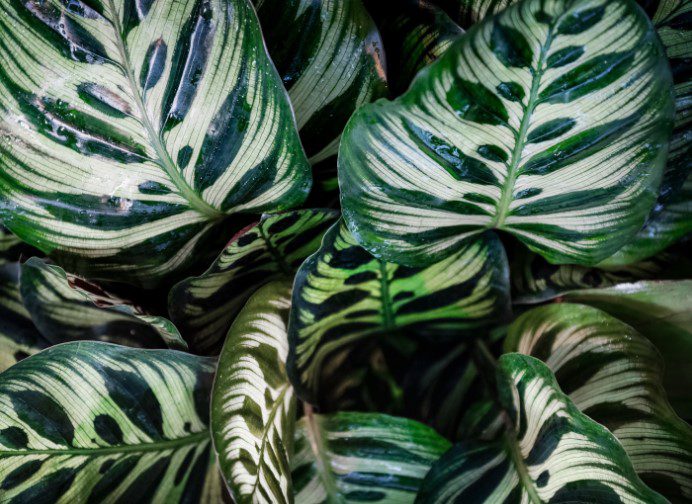Peacock Plant
Calathea makoyana peacock houseplants are often part of indoor collections. However, some gardeners claim they can be difficult to grow. These simple tips will help you take care of Calathea’s peacock plant and create the conditions it needs to thrive.
Calathea makoyana is one and much prized for its lovely and colorful foliage.
Calatheas are beautiful foliage plants with tuberous roots and finely marked foliage. They revel in semi-shade with good filtered sunlight: anything stronger will curl the leaves up or even scorch the tender younger leaves.
The plant is also given the common name of prayer plant because of how the young leaves fold together if the soil is a little dry: this is the plant’s way of preventing moisture loss. The plant would grow well in patios where the environment is moist and sheltered.
Calathea makoyana has bright green and silver markings with darker green areas around the main veins, with purplish undersides. Leaves are oval and tend to present themselves horizontally.
This grows in a clump fashion and multiplies in size. It is a perennial inhabit. The broad leaves, tough and waxy in appearance, have short stalks and in a mature plant. The foliage is held out horizontally can be quite attractive. The height is seldom taller than 30cm.
How to Grow a Peacock Plant
The Calathea peacock plants need high humidity levels of at least 60 percent. There are many varieties of peacock houseplants that offer attractive foliage. The key to optimal performance is humidity, regardless of the peacock houseplant cultivar.
Peacock plant care: Providing humidity is as easy as placing water bowls around the Calathea plant. Peacock houseplants can be grouped with other plants tolerant of humidity to increase the amount of transpiration.
You can also provide humidity by placing plants in a pebble tray indoors. While frequent misting can provide some humidity, it is insufficient to provide 60% humidity in a heated, dry room.
Calathea peacocks can be cared for by frequent, lukewarm baths. You can either place them in the shower with other plants that require high humidity or use a spray attachment to put them near a sink.
You can make a humidifier tent for use at night or cover it with a cake. Peacock houseplants can also benefit from a humidifier.
Additional tips on how to care for peacock plants
Start with a healthy peacock plant when you learn how to grow one.
Avoid small nursery plants with browning or poor color leaves. They are unlikely to recover fully. This plant should be in low- to moderately bright light.
Peacock plants need to be kept moist. Fluoride in water can cause damage to the Calathea Peacock Plant’s foliage.
Rainwater can be collected to water peacock houseplants. You can also use bottled water that is free of fluoride.
To avoid brown spots or pale leaves on Calathea peacock plants, use high-nitrogen fertilizer.
This can also happen if you use too much fertilizer that is high in phosphorus. To remove fertilizer salts, it is important to leach the soil periodically.



























Comments are closed.